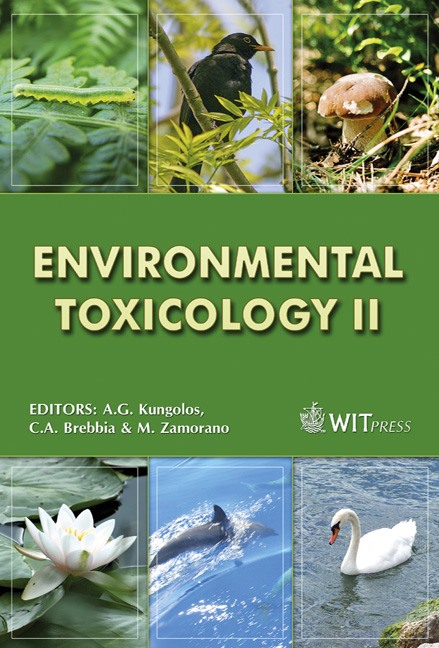Toxicity Reduction Evaluation (TRE) Procedure For Identification Of Toxic Substances In Landfill Leachate
Price
Free (open access)
Transaction
Volume
110
Pages
10
Page Range
117 - 126
Published
2008
Size
350 kb
Paper DOI
10.2495/ETOX080131
Copyright
WIT Press
Author(s)
M. Cotman & A. Žgajnar-Gotvajn
Abstract
Landfilling is one of the most widely used methods for the disposal of municipal solid wastes. The degradation of the organic fraction of the wastes in combination with percolating rainwater leads to the generation of highly contaminated liquid, called leachate. Municipal landfill leachates typically contain high concentrations of inorganic compounds (ammonium and metals), as well as high levels of organics, many of them also toxic and resistant to biodegradation. Because of this, treatment efficiency of conventional biological plant for landfill leachates is usually very low. The purpose of our research work was to evaluate the quality of the leachate originating from municipal landfill and to assess efficiency of air stripping and adsorption to activated carbon for reduction of toxicity of the leachate. Both TRE procedures were used to identify the contribution of organic substances (air stripping, adsorption) and ammonium nitrogen (air stripping) to toxicity of the effluent. We have followed the efficiency of single toxicity reduction method with measurement of physicochemical parameters and toxicity bioassays. They were carried out by applying an acute toxicity test with luminiscent bacteria Vibrio fischeri and an acute test with nitrifying microorganisms from activated sludge. We have compared physico-chemical analysis and toxicity of the leachate before and after TRE procedures. Air stripping removed 85% of ammonium nitrogen at pH value of 11, but the removal of organics was low. On the other hand, adsorption to activated carbon (50 g·L-1) removed 79% of organic compounds, but ammonium nitrogen remained. Both methods (TRE) did not decrease toxicity to the nitrifying microorganisms. We have concluded that ammonium nitrogen and organic substances do not contribute much to the toxicity of the leachate. Further work will be focused on some other TRE methods, mainly ion exchange to assess the contribution of high concentrations of inorganic compounds. Keywords: toxicity reduction evaluation, landfill leached, air-stripping, powdered activated carbon treatment.
Keywords
toxicity reduction evaluation, landfill leached, air-stripping, powdered activated carbon treatment.





